Sources:
As mentioned before, I exclusively use portable electronics due to a space issue I have, sharing an apartment with three other people, two of which are kids, I have to make arrangements to offer a satisfying room structure for everyone. Kids toys first, as little electronics as possible in reachable areas. Therefore, a full-sized desktop headphone amplifier has no place in our flat. Though I wish I could have tested the Final with a proper amplifier, as I expect them to sound even better when driven to their full potential. Yet the supplied 3.5 Millimeter stereo jack implies that the D8000 is also very capable from smaller electronics.
I’ve primarily tested the D8000 with my Chord Hugo2 at the office or at home, lately however my Mojo has also found its way back out of box and into my office. I’ve really been enjoying the times lately with it, Mojo still is an outstanding miniature DAC/Amp. Only rarely I have taken my Astell&Kern SP1000 out to play with the Final headphones, but surprisingly they did pair nicely. That’s one thing Final always had in their mind I guess, making their headphones also suitable for weaker electronics. Even their flagship Sonorous X can be powered by a regular smartphone or DAP, of course sound quality scales up with better sources.
My most cherished transportable source. The D8000 sounds absolutely sublime with it. Incredibly detailed and layered with superior sound stage and imaging. The painted picture is clean and with high resolution, making it possible to look at every aspect of it with ease. The Hugo2 has a nicely balanced and neutral signature that matches the slightly darker tonality of the D8000 very well. Giving it heaps or information and embodying great emotions. Transition from bass to mids and treble is superb. It’s definitely my favourite pairing of all.
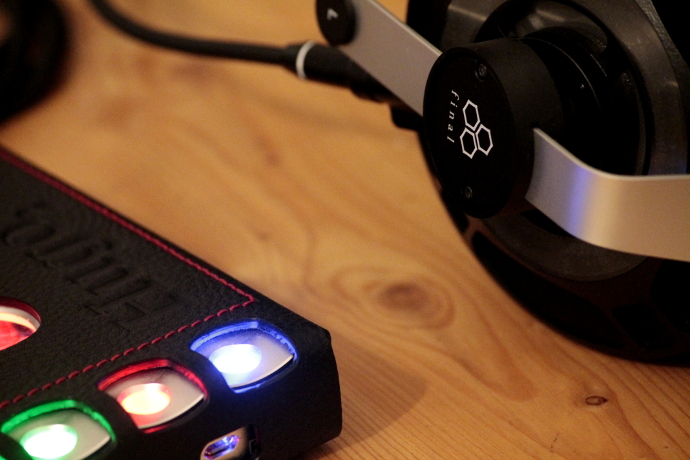
Final Audio D8000
Chord Electronics – Mojo
Mojo has made a surprising comeback at my office a little while ago. Where Hugo2 was my main office source since it stepped foot into it, Mojo has been quietly and patiently waiting at home. Ever since it has joined me at work again, I have been on a journey to rediscover this little box of wonders. Mojo is the more digital of the two Brits, but also sports an insane amount of details with high precision and care. Sound stage is not as tall as with Hugo, but stretches still in good measures out of your head in terms of width and depth. The D8000 pairs well with Mojo as it features then a very harmonious and engaging sound, with good textured and deep bass, well layered mids and clear sparkling highs.
Astell&Kern – A&ultima SP1000
I recall using the SP1000 with the D8000 only a few times, simply as I don’t use open back headphones on the go. I’ve only used this setup at home when cooking and for critical listening to evaluate the Final’s.
The D8000 still sounds nicely bodied with great emotion and an organic overall tone, but to me it’s missing some of the low-end dynamics and punch it sports with the Chord products. Sound stage is a tad narrower than on Hugo2. Resolution and layering are both very good, instruments are carefully placed in the constructed room with the right amount of air.
The AK is definitely capable of driving the D8000, I bet the balanced output, with its bigger power and output voltage, does an even better job.
ALO Audio – Continental Dual Mono
Just like with Mojo, CDM hasn’t seen much action since the Hugo2 era started. Actually pretty much none at all. I’ve only taken it out a few times to listen to my Sennheiser HD800S and the headphone of this review.
While I admire the lush midrange of my hybrid tube amplifier, I must say, that the D8000 sounds significantly better straight out of Hugo2 than with CDM in the chain. It loses resolution and layering. Treble is more recessed and not as detailed. Instrumental separation takes a hit and music comes across a bit mushy.
Back into the box it goes…
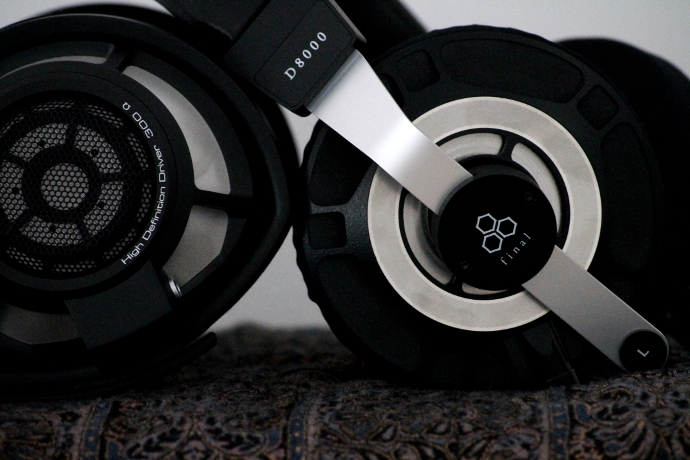
Final Audio D8000
Comparisons:
There is only one other high end headphone in my inventory – the Sennheiser HD800S. I wish I could compare the D8000 to more full sized cans, but there is only room for one at home. It would be really good to compare the Final against other planar headphones to find out if AFDS really is such a huge improvement over traditional planar magnetic drivers. As said, my time with the likes of a HiFiMAN HE-1000 or an LCD-3 of Audeze has been bound to exhibitions with unpleasing conditions. I will not include my impressions of them here, as I just don’t find that right to do. Some people do it, I think you can only truly evaluate a product when you use it on an extended basis with your own music. Maybe I’ll be lucky enough to do just that one day, then I will tell the world how the big players fare up against this Japanese pair.
For now the HD800S must be enough for you as a reference to get a better understanding of how the D8000 sounds.
Sennheiser – HD800S (1699$)
The Sennheiser is a lot less efficient and needs more power to come to the same listening levels. It is also fairly driven by Hugo2, but the volume dial gets some more rotation than with the Final. The HD800S in comparison is especially thinner, that’s the most obvious difference right at the beginning. The Final is fuller from bass to mids. D8000 has bigger low-end body and a good margin more sub bass foundation. Sound stage and resolution wise both are pretty much en par. Treble of the HD is brighter, cleaner and also thinner compared to the D8000, which also is crisper.
Where the German sounds sterile and cold reference tuned, the Japanese opts for organic representation with an engaging and full experience. The HD800S also is packed with emotion when paired with Hugo2, but the amount found in the D8000 simply outshines it.
Where the Sennheiser is unbeatable in though is comfort. I can wear that headphone for hours without any pressure or discomfort, as it is merely 200 grams lighter.
At roughly 1700 US Dollars, the Sennheiser comes in significantly cheaper though.
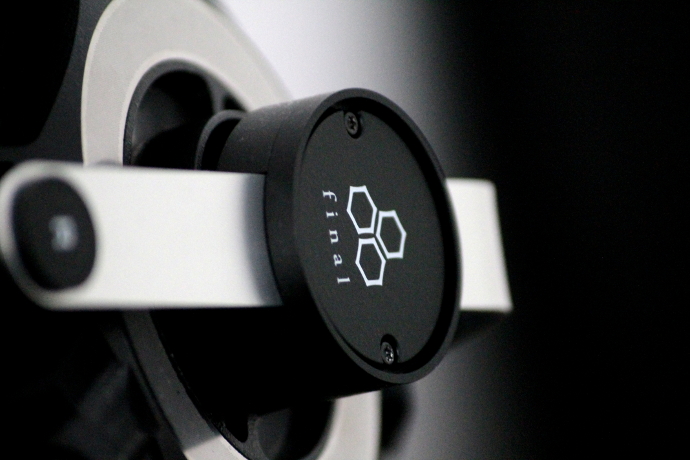
Final Audio D8000
Conclusion:
The D8000 is Final’s very first approach to a planar magnetic headphone, with a price tag of 3799$ they have aimed directly at the high-end market, leaving mid-fi for a later date. This certainly was a bold move, but Final has set out to surprise audiophiles around the globe with what they’re capable of. For a long time, Final Audio has been underestimated or flying under the radar of many of us. With their D8000 planar magnetic headphones they definitely are going to shake a lot of grounds.
Final has created a very unique and competent new headphone with their D8000, that convinces with great body, sound stage and details. It delivers a natural and joyful listening experience from the very first notes onward, and for that I highly recommend giving it a shot if you’re looking for a new headphone. My only wish is that it would be lighter or have a more comfortable weight suspension to ensure long lasting listening sessions.
I’ve seen that Final will be exhibiting at the upcoming CanJam in New York, if you’re there, give the D8000 a go!





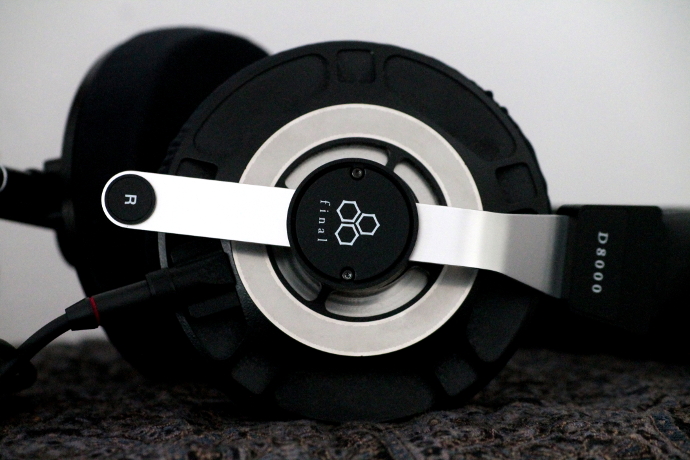

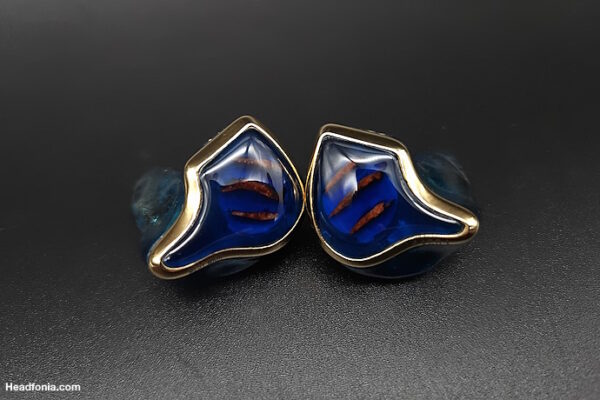
dale thorn
So if you were coming to the 8000 with a need to hear an accurate high end for DSD and other high-res tracks of piano and orchestra, would the treble be accurate enough, or need boosting. In my case with the Pandora VI, I found the treble to be similar to the HD800 in most respects.
Linus
Hi Dale,
yes, true the Pandora Hope VI indeed shares some similarities with the HD800.
I never felt the urge to adjust anything with the D8000…
Barun C
Pandora VI still holds up today, despite introduction of a barrage of headphones in the $699 to $999 range.
dale thorn
I don’t remember the exact weight of the Pandora VI, but I do remember a feature that the Pandora VI had in common with the Grado PS1000e. Both of those sitting on my head felt like big bowls of water, like ice cube trays without the dividers inside that keep the individual cubes separate. So any head movement would have the water sloshing around, which was very problematic. Not literally water of course, but that’s what they felt like. So I had to keep my head very still.
Barun C
Pandora VI are almost as heavy as Planar Magnetic models of Audeze, it never bothered me while listening for long sessions, but once I take them off, it is like a relief.
JBL E55BT
I do not think I love him. If it is heavy enough when worn !
dale thorn
Heavy isn’t so much the problem. The problem I had with the Pandora VI and the Grado PS1000e were how the weight would shift around on my head with the slightest head movements. If there were a way to secure the headphone from shifting, that would make the biggest difference.
John
I would love to know if the bass on these is high quality or if it is overblown. I would also love to know more about the treble. I also own the 800S and love it, but it gets bright at times. You’ve already said that the d8000 treble is not as bright as the 800S, but do you feel it still presents all the details or does it seem too rolled off and loses the microdynamics? Thanks in advance!